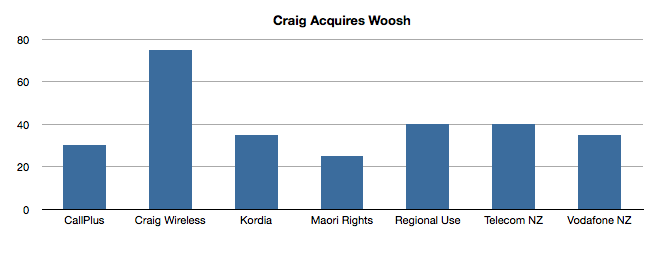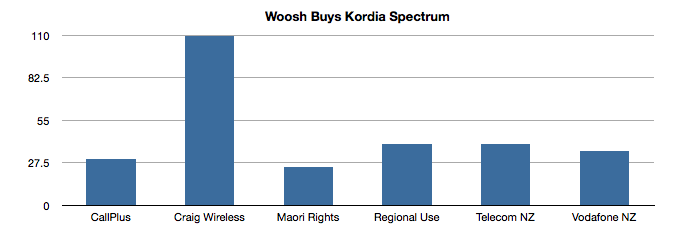While many New Zealanders are considering the jump from copper to fibre broadband, many more aren’t considering either. It’s not that they don’t want broadband for themselves or their children, it’s because they can’t afford it.
In a report published in April, Statistics New Zealand estimated that 331,000 households don’t have broadband Internet access. A third of those households cite cost as the main reason. More troubling is that 63,000 households with dependent children don’t have access to the Internet because of cost.
Statistics also noted that 215,000 households don’t have landlines, but didn’t break down the reasons behind this. In Australia, 40% of mobile only households cited cost as the reason for not maintaining a fixed line. Going mobile only can be a huge cost saver if all you want to do is call and text. If New Zealand follows the lead of the European Union, soon up to 27% of households will be mobile only, and for many of those households cost will be the reason.
Prepay mobile and text are an amazing, inexpensive enabler of communications, and they’re easy to understand. Text messages and minutes have a cost. Sometimes in-network minutes cost less, but there’s a finite set of variables at play. On a monthly basis, prepay is usually cheaper than keeping up payments on a fixed line – and unlike fixed lines, prepay mobiles still receive calls and texts for months when you’re out of credit.
Prepay mobile data is an entirely different beast. It is far more expensive than fixed-line data, and comes in far smaller allocations. It’s allocated in bytes, not minutes, and it can be hard even for technical users to understand how bytes are getting spent. A simple mistake like allowing Windows Update to run over mobile data could see a data cap meant to last a month gone in minutes.
It’s true that mobile data is more expensive to provide than fixed-line data, though in New Zealand some of this expense comes from government policies around the sale of radio spectrum and carriers’ abilities to build radio towers. Other factors include New Zealand’s low population density. The end result is that prepay mobile data on Telecom’s and Vodafone’s national networks can be 50x more expensive than data on their fixed line networks.
It’s also true that the amount of mobile data required to perform most day to day tasks on the Internet is vanishingly small, and using the mobile web can be surprisingly inexpensive. For less than the standard cost of a prepay text message, you could check your balance on a mobile-optimised online banking website, download a Charles Dickens novel from Project Gutenberg, and have an entire conversation via Facebook Messenger.
The cost of optimised mobile data is so small that when Amazon sell a 3G-enabled Kindle, they include free 3G data for life, worldwide. Take your Kindle anywhere and the cost of browsing their store or downloading a new book is zero. Want to Tweet that you’ve finished a book? That’s free too. Similarly, Facebook have launched a product in many countries called “Facebook Zero”, where all mobile data traffic associated with viewing and posting status updates (but not watching movies) on a special Facebook page is free.
Even though only a small amount of data is required for many important Internet tasks, if you’ve blown your data cap watching a YouTube video or listening to streaming music, you’re out of luck until you can afford to top up your account again – and if your child needs the Internet for schoolwork, they’re out of luck too. Such situations result in the worst kind of social exclusion, and only serve to widen the digital divide.
This is a solvable problem, and a solution can be had without new legislation or regulation of the telecommunications industry. Amazon and Kindle have shown us that there is a market mechanism for providing free mobile data to end users: Sending Party Pays.
The idea of Sending Party Pays (SPP) has been around since the days of the Penny Post, and was the standard medium of business communication for the hundreds of years before the advent of the Internet. It allows businesses and government to directly pay carriers to communicate with customers or constituents who might not otherwise have the desire or means to pay for such communications. It further provides an incentive for senders to be concise and efficient with communications, both in terms of quality and quantity. It’s a proven model that needs to be extended into the digital age.
I call on government to commit to offering mobile-optimised versions of all government, social services, National Library, and Network4Learning resources in a Sending Party Pays arrangement with mobile carriers. Every New Zealander with a working SIM card should be able to access such services no matter their financial situations. Given the low transactional costs possible with 3G data, for a few million dollars a year we could make sure no one is excluded from a digital revolution that should be raising up all members of our society.
There will always be a place for requester pays content. In the present business model, all mobile web content is the equivalent of an 0900 call on a landline. When it comes to socially beneficially information, that’s not right. Uploading party pictures or watching the latest viral video shouldn’t be free, but everyone should be able to access education, health care, social services, and government resources for free, and as a society we should be providing this access in the easiest, most efficient manner possible.
If you want to discuss the policies, commercial mechanics, or the technologies that would enable a broad move to the provision of Sending Party Pays 3G data, come to NetHui in Wellington this July and let’s get on with ensuring Internet services are accessible for all New Zealanders.





